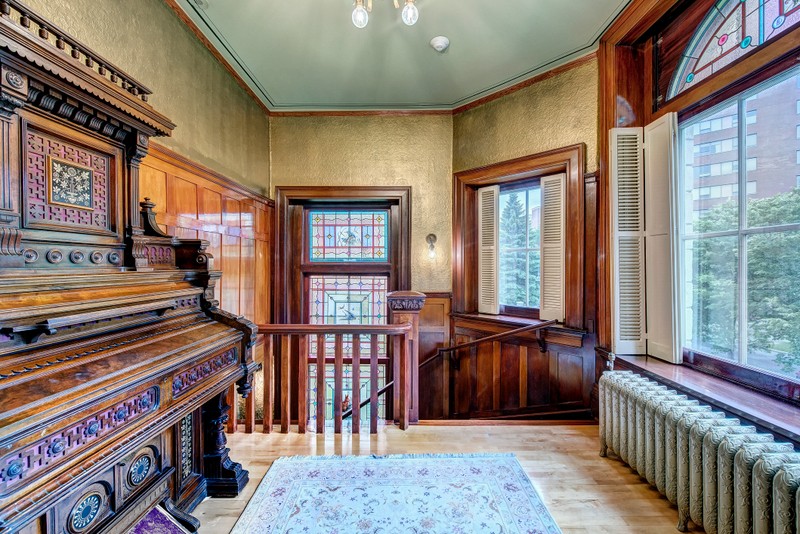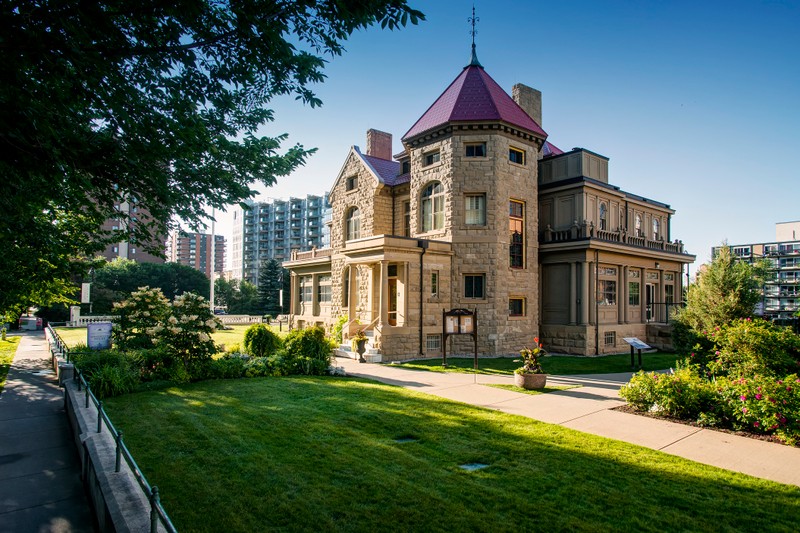Second Floor Landing
Introduction
Author-Uploaded Audio
Listen to a narration of this entry's description by Lougheed House National & Provincial Historic Site .
Text-to-speech Audio
Images
image 1, Second Floor Landing, 2020

Image 2, Octagonal tower, 2020

Image 3, Wooden Pump Organ, 2016.

Backstory and Context
Author-Uploaded Audio
Listen to a narration of this entry's description by Lougheed House National & Provincial Historic Site .
Text-to-speech Audio
This is the Octagonal Tower (Image 2).
It is a distinguishing characteristic of Lougheed House – really more stylish than practical.
Towers were popular in the grand homes of the late 1800s – found in both Queen Anne and Romanesque architecture.
As with the Lougheed House, eight-sided towers were almost always single elements found at one corner of the house. They offered a chance to break up the monotony of a square home by introducing a unique feature at one end.
This is The Organ (Image 3).
This antique organ is a very different instrument from the Grand Piano found in the Mission Room downstairs.
It is a wooden pump organ, which also goes by the name reed organ, parlor organ, cabinet organ and cottage organ.
As you can see, it is a lot smaller than the pipe organs found in large cathedrals. This one is designed for more intimate spaces – like smaller churches and private homes.
The volume and tonal range of pump organs were limited, and they began to fall out of favour in the late 1900s as home pianos became more popular, and fewer organ compositions became available.
Sources
.
Chris Stutz, Chris Stutz Custom Photos
Chris Stutz, Chris Stutz Custom photos
32, LHCS Collection, 2016
